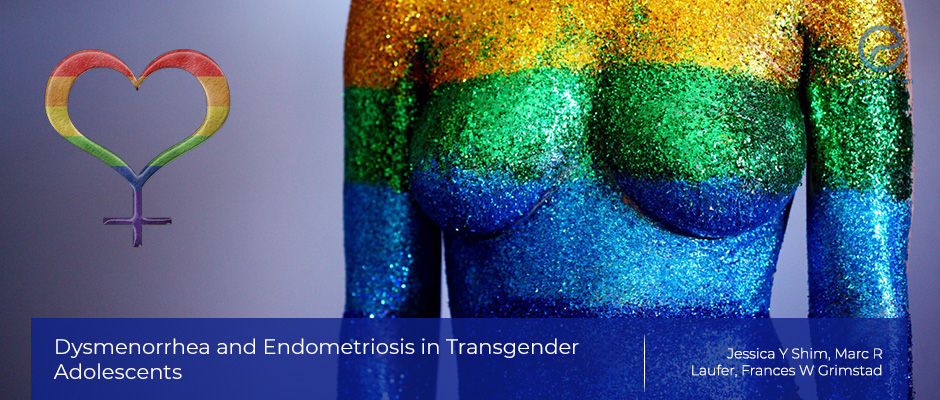Endometriosis Impacts Transgender Adolescents
Jul 24, 2020
Transmasculine adolescents may be affected by dysmenorrhea and endometriosis.
Key Points
Highlights:
- Endometriosis should be considered in symptomatic transmasculine person even when utilizing testosterone.
Importance:
- Endometriosis is characterized in transmasculine persons as well.
What's done here:
- The researchers studied the presentation of dysmenorrhea and endometriosis in transmasculine adolescents and reviewed their treatment outcomes.
Key Results:
- Evaluation for endometriosis was underutilized in transmasculine persons with dysmenorrhea.
- There is an individual variation in the susceptibility to menstrual and pain suppression by androgens, both danazol and testosterone.
- Transmasculine persons with dysmenorrhea may require suppression in addition to testosterone treatment.
Limitations:
- The researchers did not have further menstrual information on the patients with dysmenorrhea and endometriosis and may have underreported some risk factors.
- Clinicians may have underutilized coding for dysmenorrhea.
- Patients with both cyclic and acyclic pelvic pain may have been missed since they may not carry a diagnosis of dysmenorrhea.
- Endometriosis may be underreported since laparoscopy was likely underutilized.
Lay Summary
Shim J.Y. et al, from Boston, Massachusetts retrospectively searched the electronic medical records of transmasculine patients younger than 26 years old who were diagnosed with dysmenorrhea and treated at Boston Children’s Hospital, between January 1, 2000, and March 1, 2020. They reviewed the clinical characteristics, transition-related care, and treatment outcomes of the patients and have published their study in the "Journal of Pediatric and Adolescent Gynecology".
Thirty-five transmasculine young people with a diagnosis of dysmenorrhea were identified. The mean age at diagnosis of dysmenorrhea and the average age of menarche was approximately 14.9 years and 11.9 years, respectively. Twenty-nine transmasculine adolescents (82.9%) were found to have a diagnosis of dysmenorrhea after the social transition to the male gender.
Seven transmasculine adolescents with dysmenorrhea (20.0%) had laparoscopically confirmed endometriosis. With conventional endometriosis therapies, 3 patients achieved resolution of endometriosis-associated symptoms. After testosterone therapy, 2 patients experienced improvement, and 2 patients experienced persistent symptoms despite testosterone use. Most of the patients with endometriosis received their diagnosis before their social transition.
The choice of treatment was found to depend on the treatment efficacy, patient preferences, medication side effects, contraceptive needs, and gender dysphoria. In addition, researchers found individual variation in the susceptibility to menstrual and pain suppression by androgens, both danazol and testosterone.
According to the authors, access to electronic data and follow-up within a large tertiary care referral center are the strengths of the present study.
The researchers acknowledge several limitations of their analysis that may have negatively influenced the results. For example, the researchers did not have further menstrual information on the patients with dysmenorrhea and endometriosis and may have underreported some risk factors. Moreover, clinicians may have underutilized coding for dysmenorrhea. Patients with both cyclic and acyclic pelvic pain may have been missed from the current study since they may not carry a diagnosis of dysmenorrhea. Endometriosis may be underreported since laparoscopy was likely underutilized.
The researchers suggest that in transmasculine patients with persistent and significant dysmenorrhea despite hormonal treatment clinicians should strongly consider laparoscopic evaluation for endometriosis. They also underline the need for further research in transgender people with endometriosis and other gynecologic conditions in order to improve the quality of care.
Research Source: https://pubmed.ncbi.nlm.nih.gov/32535219/
endometriosis adolescent transgender transmasculine testosterone spoonie go away

